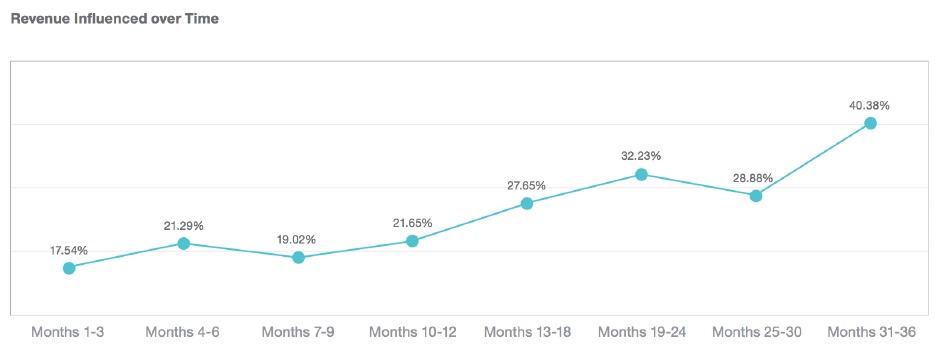Want smarter insights in your inbox? Sign up for our weekly newsletters to get only what matters to enterprise AI, data, and security leaders. Subscribe Now
Email is the workhorse of digital marketing. While we as marketers like talking about the hot new platform du jour, email marketing has been around since the ’90s, is appropriate for every audience, and delivers the highest return on investment (ROI) in digital marketing.
As it turns out, consumers like email just as much as marketers. A new survey from Marketing Sherpa reveals that most consumers like getting promotional emails every week. A vast majority (91 percent) of U.S. adults say they like getting promotional emails from companies they do business with. Of those, 86 percent would like monthly emails and 61 percent would like them at least weekly.
When consumers are this actively engaged with a digital marketing channel, I’m all ears, and you should be, too.
Email might not be the flashiest digital marketing channel, but it’s definitely the most likely to succeed. So what’s the future of email, and how can marketers innovate on this tried-and-true channel?
In its next evolution, I see email marketing becoming the connective tissue of the customer journey. It’s clear that the future of all marketing is the customer journey, as the lines between sales, service, and marketing are blurring. Customers expect a seamless and personalized experience from the companies and brands they do business with, every step of the way. Our job as marketers is to understand customers on a 1:1 basis, to understand their individual journeys, and then to influence those journeys at scale, so we can achieve desired business outcomes.
Over the next year to three years, email will move from being the digital marketing workhorse to being a connecting fiber between channels that keeps customers satisfied on every front. Email is an incredible tool all on its own. But consider these “email-plus” scenarios that are truly marketing gold.
1. Email amplifies social audiences to great effect
Facebook, Twitter, and other social networks are powerful ways to connect with existing audiences and earn new ones through creative and useful content. But we’ve also seen that the combination of email with social media is a new holy grail.
For example, in a case study of one major online retailer, Facebook ads were matched with a group of email subscribers to create a Facebook Custom Audience. This audience was then targeted with both email and Facebook ads for two weeks, finding that when first reached with Facebook ads, email openers were 22 percent more likely to purchase. Social audiences become more likely to purchase when they receive emails, and email subscribers become more frequent openers when they see Facebook ads. It’s a win for both channels.

Above: Results based on a retailer’s study conducted over two weeks in April 2014, targeting 925,000 US email subscribers using Salesforce Marketing Cloud and Facebook Custom Audiences. Facebook Offline Conversion Measurement matched and correlated ad impressions to email engagement and transactions. Findings are observational.
2. Email is the perfect petri dish for data testing
You’ve heard it and I’ve heard it: 90 percent of the world’s data has been created in the last two years. How to do something with data is the modern marketer’s challenge, but ultimately, that’s not your customers’ concern. They just want a better, more delightful experience with the companies they identify with and buy from. Enter email, which lets marketers test interactions to improve the customer journey from the very first click.
With email, marketers can bring in their data and test campaigns, offers, and messaging on a scientific basis. Data also allows for highly personalized emails, like those recently sent by DonorsChoose.org in a campaign to aid teachers who had never been funded. These personalized emails were sent exclusively to donors within a close zip code range to encourage localized giving, and they generated $450,000 from approximately 4,500 donors, or about 1.9 percent of DonorsChoose.org’s revenue for the first half of their 2015 fiscal year.
Connecting marketers to their data and allowing for personalized, predictive messages is what email does best.
3. Email combines with predictive marketing to drive major new revenue
In a crowded digital landscape, marketers need to deliver what customers want before they even ask for it. That’s what predictive marketing is for. It’s a technology that allows marketers to target consumers based on their online behaviors, sending increasingly relevant messages over time.
Predictive marketing’s strengths are most pronounced when looking at long-term lift, as shown in this chart, which depicts the influence of predictive marketing on revenue over 36 months. Revenue increased more than 40 percent after 36 months of using predictive marketing.
When combined with email, predictive marketing lets marketers create tailored 1:1 messages that result in more clicks and conversions by design. Predictive marketing is a process, not a switch to flip. First, marketers should build a profile of customer preferences from observed web activity and data from other channels. Then predictive models should be applied, using algorithms and rules to decide what content will perform best in an email. Finally, campaigns are sent, often with auto-segments and dynamic offers. It’s all about truly catering to every person’s unique behavior and profile.
Scott McCorkle is CEO of Salesforce Marketing Cloud.



